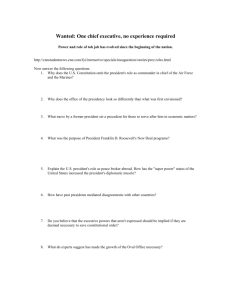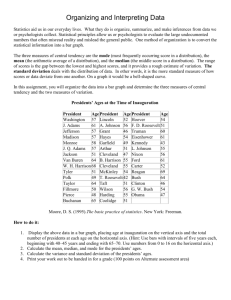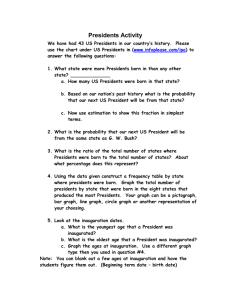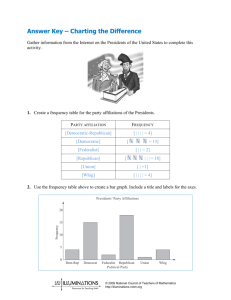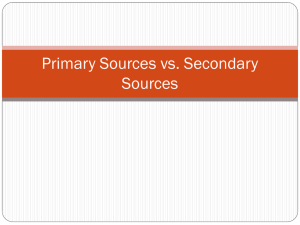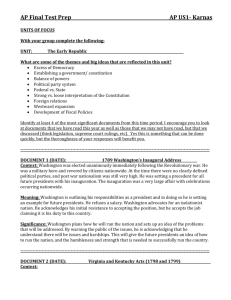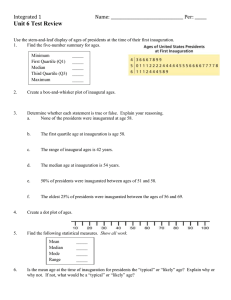Chapter 2 Test Review: Math Problems & Solutions
advertisement
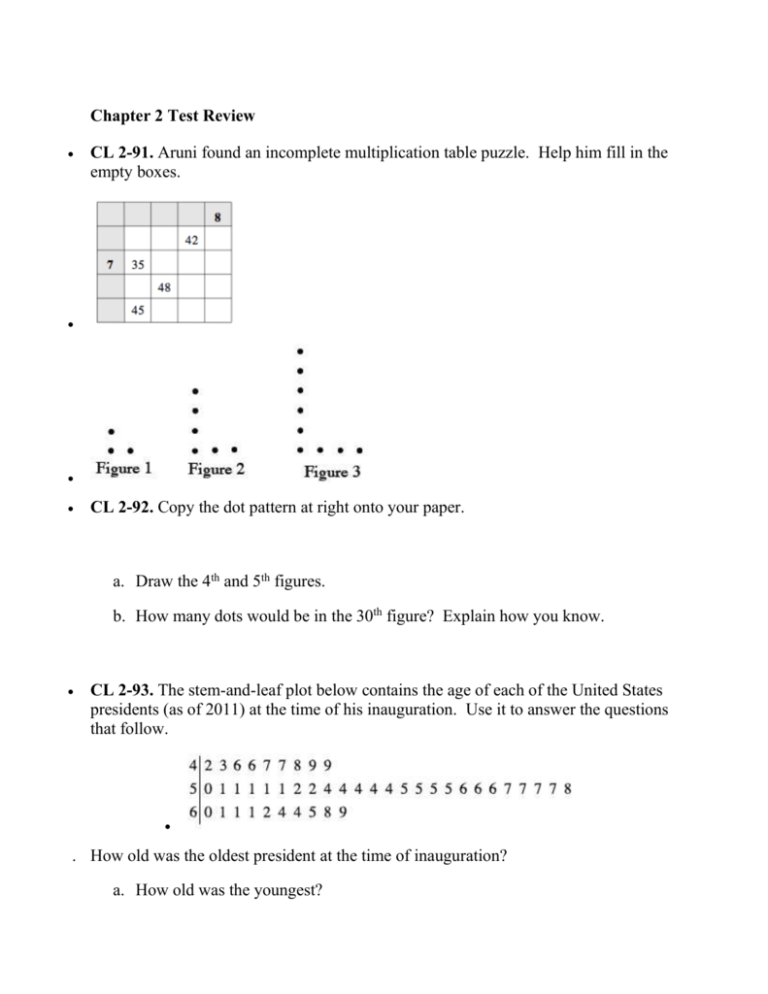
Chapter 2 Test Review CL 2-91. Aruni found an incomplete multiplication table puzzle. Help him fill in the empty boxes. CL 2-92. Copy the dot pattern at right onto your paper. a. Draw the 4th and 5th figures. b. How many dots would be in the 30th figure? Explain how you know. CL 2-93. The stem-and-leaf plot below contains the age of each of the United States presidents (as of 2011) at the time of his inauguration. Use it to answer the questions that follow. . How old was the oldest president at the time of inauguration? a. How old was the youngest? L 2-94. On your paper, copy the histogram at right, which represents some of the data about U.S. presidents from problem CL 2-93. . Fill in the missing bar. How did you decide how tall the bar should be? a. How many U.S. presidents were younger than 50 years old at the time of their inauguration? b. How many U.S. presidents are represented by this data? CL 2-95. Remember that factors are numbers that multiply to give a particular product. If necessary, refer to your work in Lesson 1.2.4 for a reminder about factors. . List all of the factors of 16. List all of the factors of 18. CL 2-96. Place the digits 4, 7, 5, 6, and 8 in the boxes below to make the largest and smallest sums possible. CL 2-97. Draw a Venn diagram to represent the following situation. Then use your diagram to answer the questions below. Out of 50 students, 15 are taking English and 30 are taking chemistry. Of those students taking English and chemistry, 6 are in both classes. . How many students are taking chemistry and not English? a. How many students are taking English and not chemistry? b. How many students are taking neither of the classes? CL 2-98. Consider the rectangle shown at right. Note: 1 yard = 3 feet . What is the area of the rectangle in square yards? In square feet? Show how you know. a. What is the perimeter of the rectangle in yards? In feet? . CL 2-99. Complete these generic rectangles. Then write a numerical sentence showing the original multiplication problem and the product. a. CL 2-100. For each of the problems above, do the following: Draw a bar or number line that represents 0 to 10. Color or shade in a portion of the bar that represents your level of understanding and comfort with completing that problem on your own. If any of your bars are less than a 5, choose one of those problems and complete one of the following tasks: Write two questions that you would like to ask about that problem. Brainstorm two things that you DO know about that type of problem. If all of your bars are at 5 or above, choose one of those problems and do one of these tasks: Write two questions you might ask or hints you might give to a student who was stuck on the problem. Make a new problem that is similar and more challenging than that problem and solve it.
